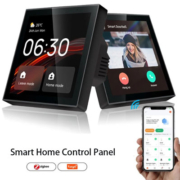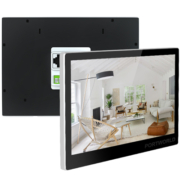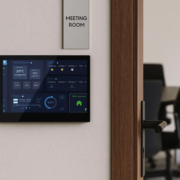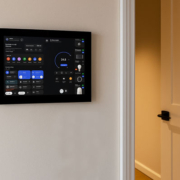How To Get Started With Smart Home Automation
Smart home automation is no longer just a futuristic idea—it’s a practical reality that can make daily life more convenient, secure, and energy-efficient. Whether you want to control your lights with your phone, adjust your thermostat automatically, or manage your entire home through a central control panel, getting started with smart home automation is easier than you might think.
1. Understand What Smart Home Automation Means
At its core, smart home automation allows devices in your home—such as lighting, HVAC systems, security cameras, and appliances—to communicate with each other and be controlled remotely. This can be done through a smartphone app, a wall-mounted control panel, or even voice assistants like Alexa and Google Assistant.
For example, imagine arriving home after work: your lights turn on automatically, your thermostat adjusts to the perfect temperature, and your favorite music starts playing—all without lifting a finger. That’s the power of automation.
2. Define Your Goals
Before buying devices, think about what you want to achieve:
- Convenience – Control lighting, appliances, and curtains remotely.
- Security – Integrate cameras, smart locks, and motion sensors.
- Energy Efficiency – Automate heating, cooling, and lighting to reduce bills.
- Comfort – Centralize everything through a smart home control panel.
By identifying your main priorities, you can choose the right devices and avoid wasting money on features you don’t need.
3. Choose Your Smart Home Ecosystem
Smart devices need a communication standard to work together. Common ecosystems include:
- Zigbee & Z-Wave – Reliable wireless protocols for sensors and lighting.
- Wi-Fi & Bluetooth – Great for simple devices like smart bulbs or plugs.
- KNX & Modbus – Widely used in professional and commercial automation systems.
- Voice Assistants – Amazon Alexa, Google Assistant, and Apple HomeKit provide user-friendly integration.
Choosing one main ecosystem (or a hub that supports multiple) ensures your devices work smoothly together.
4. Start Small and Expand
It’s best to begin with one or two systems and scale gradually. For instance:
- Install smart lighting that can be controlled by app or voice.
- Add a smart thermostat to manage energy costs.
- Introduce security cameras or smart locks for safety.
Once you’re comfortable, you can expand into full automation with sensors, curtains, HVAC, and entertainment systems.
5. Consider a Smart Home Control Panel
While apps and voice assistants are useful, a dedicated smart control panel provides centralized, wall-mounted management of your entire home. Companies like Portworld offer Android-based smart touch panels (e.g., YC-SM08P, YC-SM55P, YC-SM10P) that integrate lighting, HVAC, curtains, and security into one simple interface.
This not only makes automation more reliable but also adds a professional touch to your smart home setup.
6. Think About Installation
Depending on your system, installation may be DIY or professional:
- DIY-friendly devices – Smart plugs, bulbs, or Wi-Fi cameras can be set up easily.
- Professional-grade systems – Wall panels, KNX, or PoE-enabled devices may require an installer for wiring and configuration.
If you plan to automate an entire house or office, working with a professional integrator ensures long-term stability and efficiency.
7. Plan for the Future
A good smart home system should be:
- Scalable – Easy to add new devices later.
- Customizable – Adaptable to your lifestyle and preferences.
- Secure – Data encryption and regular updates are essential.
With Portworld’s OEM/ODM smart home solutions, for example, you can customize both hardware and software, ensuring compatibility with local market needs.










